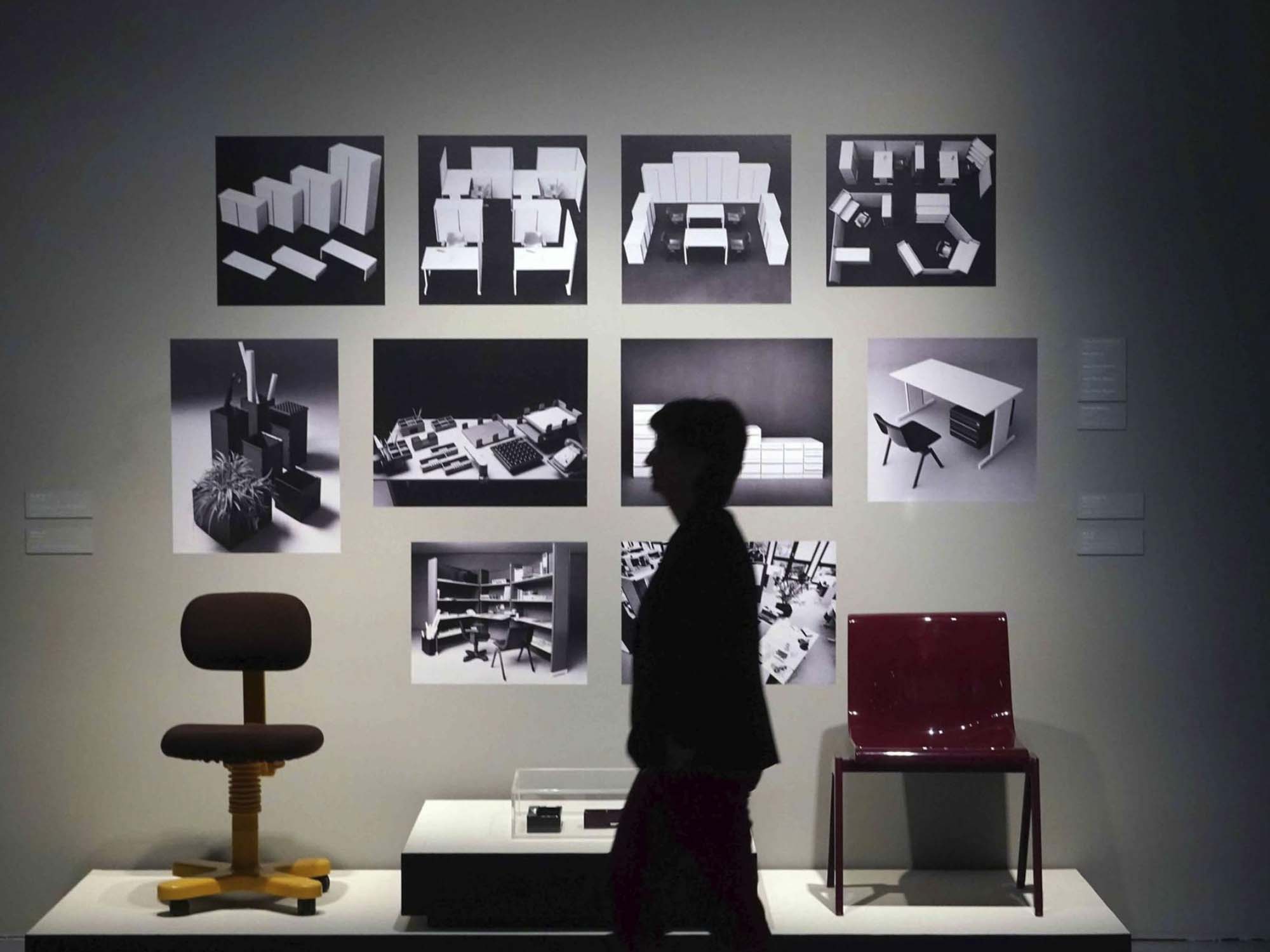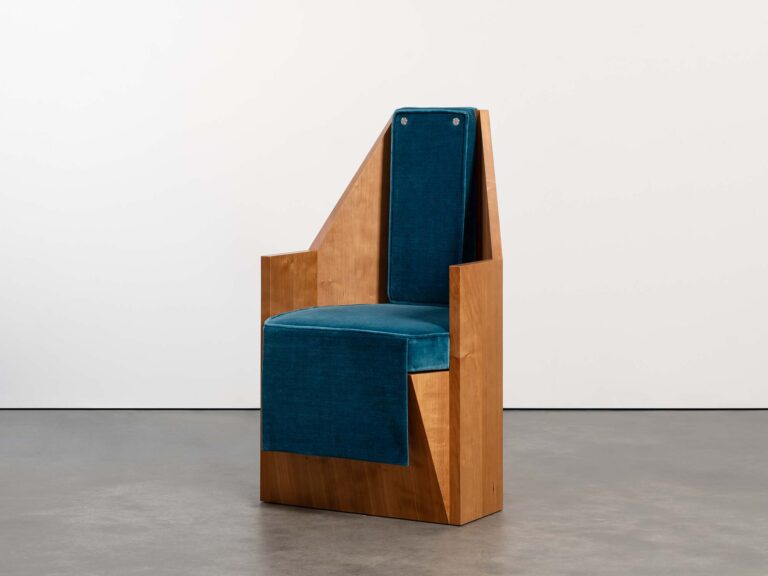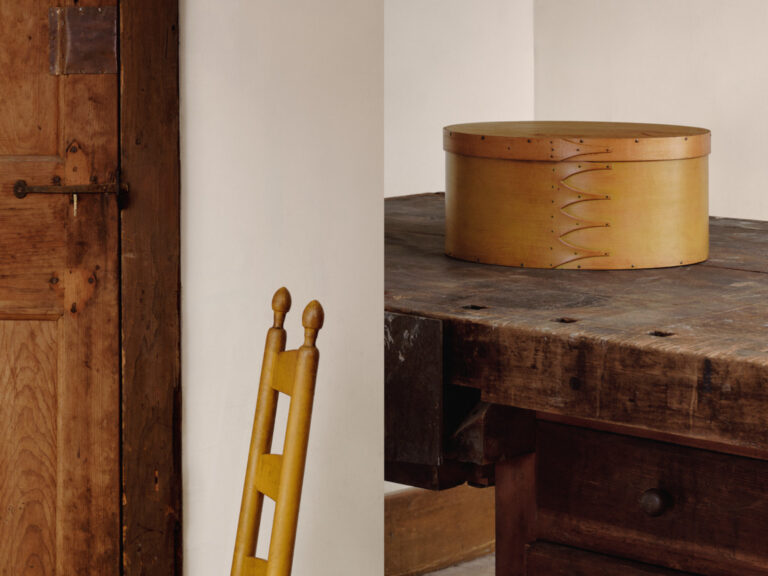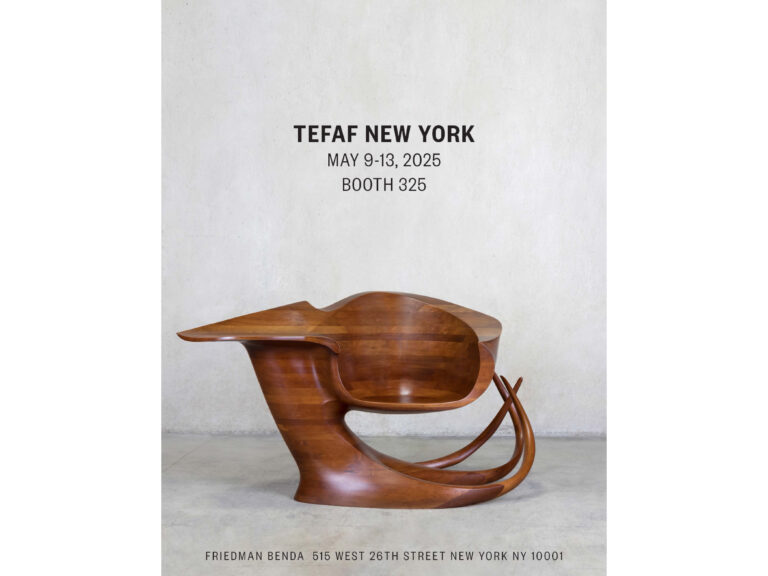Designer, architect, writer, poet, Ettore Sottsass (Innsbruck, Austria, 1917-Milan, 2007) is one of the most important creators of the 20th century. Throughout his life, Sottsass never stopped emphasizing the emotional dimension of design, beyond rationalism and functionalism. As an architect, he also conceived of design as another aspect of architecture.
The exhibition begins in the 1940s, with the first creative steps of Ettore Sottsass, and culminates in the Memphis Group, in the 1980s.
In the beginning, in the immediate post-war period, Ettore Sottsass trained as a painter and made sculptures (Space Model, 1947), drawing inspiration from the modern avant-garde. He experimented with pictorial abstraction and participated in the Concrete Art Movement in Italy. He settled in Milan as an architect, initially working with his father. Starting in 1947, Sottsass began carrying out furniture and interior design projects. The Grassotti Cabinet (1946-1948) is a rare piece of furniture that shows the influence of the Dutch De Stijl movement, but also of modern architecture.
In 1956, Sottsass made his first ceramics. A poor object, ceramics are related to the primordial gesture that links man with the cosmos, and points to a “ritual and symbolic function” in the objects. At the same time, in 1958, he began working as a consultant for Olivetti, a firm for which a year later he designed the first electronic calculator, Elea, as well as typewriters. Sottsass’ “magic design” always incorporates the industrial dimension. The same approach to the object as environment underlies both the rational office systems for Olivetti and the monumental ceramics of the late sixties. He also works on the sensory dimension of objects: for example, the bright red color of the famous Valentine portable typewriter (1969).
In the early 1960s, Sottsass’s worldview changed thanks to his travels, including to India, and his discovery of the American counterculture fueled by the Beat Generation. The 1960s and 1970s were years of radical experimentation, between design and architecture. The Superboxes (1966), a project of cabinets covered with plastic laminates, which would become the favorite material of the Memphis Group in the 80s, are witnesses of dialogue between design and architecture. These “small architectures” are located on the border between the rational and the magical. During his “radical” period, between 1966 and 1974, Sottsass devoted himself to writing, photography and drawing. Throughout his life, Sottsass traveled constantly and dedicated himself to taking thousands of photographs and archiving his work. Testimony of his interest in the culture of the anonymous, the “poor” and the vernacular, his photography is a true melting pot of creative thoughts and intuitions. Traveling and photography were part of the same spiritual odyssey.
In 1981, Sottsass founded the Memphis Group in Milan. With his iconoclastic approach to design, Memphis broke with functionalism and style to exalt the emotional and sensory dimension of objects. Around Ettore Sottsass and with the theoretical contribution of Barbara Radice, Memphis (in which, among others, Michele de Lucchi, Nathalie du Pasquier, George Sowden, Martine Bedin, Matteo Thun, Aldo Cibic, etc. participated) was synonymous with a unbridled creative freedom that sought new narrative forms in decorative motifs. Memphis revolutionized design with its pop pieces with asymmetrical shapes, bright colors and the use of materials such as plastic laminate.
For Sottsass, design was a comprehensive area of creation. Offered here is a selection of a hundred exceptional works – design objects, drawings, installations, photographs – from the collections of the Center Pompidou (Musée national d’art moderne-Centre de création industrielle and Bibliothèque Kandinsky).










